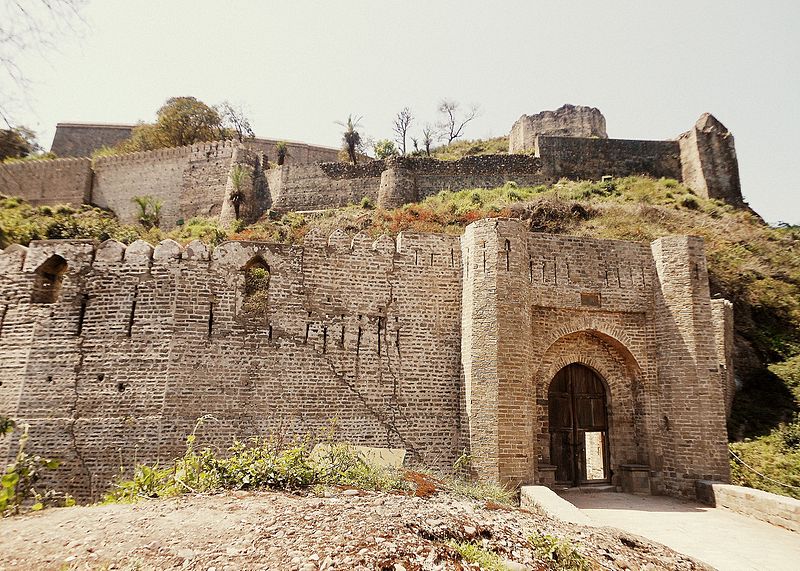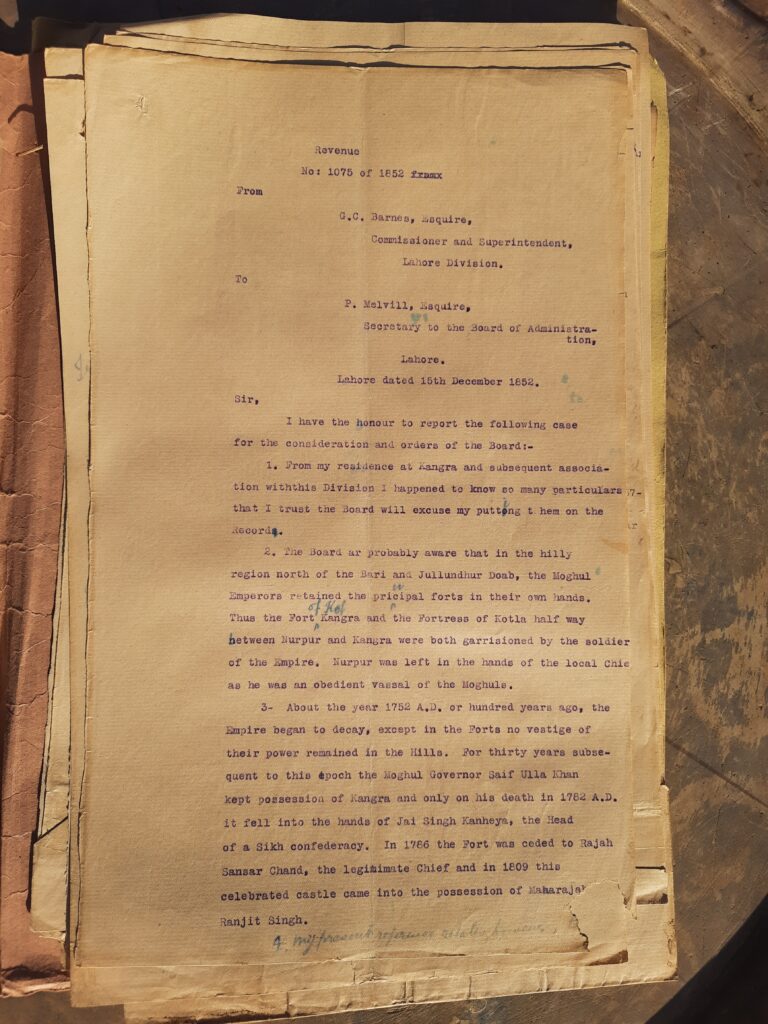
by Rahul Singh Guleria
The fort was built by Raja Ram Chand of Guler (the 15th Raja of Guleria dynasty) in the 16th century. Located in Kangra district of Himachal Pradesh, it is at a distance of 37 km from Dharamshala and 54 km from Kangra town.
The fort stands at an altitude of 650 m, overlooking the surrounding deep valleys. The fort houses 15 corridors and was built on a huge rock, which follows the building style of Kangra Fort. A Bagulamukhi temple is located at the main entrance of the fort. There is also a small temple devoted to Lord Ganesh which features a round roof. The temple is adorned with wall paintings on the outer walls.
The Kotla fort remained largely under the control of the Guleria chieftains since its inception. They had autonomy over the fort and the surrounding region while suzerainty of Mughal kingdoms of north India held influence over it in the 1700s.
About the year 1752 the Mughal Empire began to decay. Though titular control was maintained by the Mughal Governor Saif Ulla Khan / Saif Ali Khan till his death in 1782 when the Mughal suzerainty had vanished.
It came under the suzerainty of Raja Sansar Chand, the legitimate local king for a period of approx 30 years. The same clan as the Guleria Rajputs.
In the year 1811 Maharaja Ranjit Singh sent an army under his commander Sardar Desa Singh to capture the Kotla fort. While there was no open warfare between the Guleria chieftains (in possession of the fort) and Sardar Desa Singh’s army. A compromise was reach under which the control of the fort was passed to the Sikh empire and in return a Jagir of Rs 10,000 per year was granted to the Guleria chieftains in Mirthal, Punjab (on the Beas river). Desa singh in return had obtained a deed of Rs 12,000 per year of Kotla fort and surrounding villages.
My direct ancestors had to leave Kotla fort and migrate to Mirthal as a consequence of this agreement.
After the first anglo-sikh war in 1846, this fort passed into the control/ suzerainty of the British India empire.





